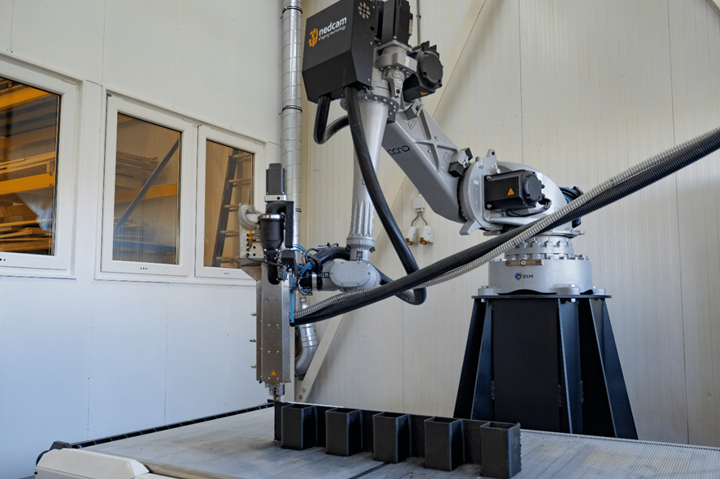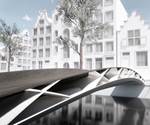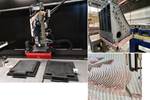Nedcam adds CEAD AM Flexbot for 3D printing using DSM materials
The two companies will explore new applications in tooling, large-sized and circular end-use parts.

CEAD AM Flexbot 3D printer. Photo Credit: Nedcam
Nedcam, a provider of total solutions for the realization of 3D shapes, recently added a CEAD (Delft, Netherlands) AM Flexbot robotic 3D printer to their site in Heerenveen, Netherlands. Collaborating with DSM (Geleen, Netherlands) on material and 3D printing technology, Nedcam will offer commercial 3D printing production services to manufacturers looking for large-size applications, using DSM’s optimized pellet materials.
The two companies will also collaborate to develop and test new materials, processes and applications and will bring innovative solutions to markets requiring large-size 3D printing, such as marine, renewable energy, construction and infrastructure. It is also said both companies are currently collaborating closely with Royal HaskoningDHV for slicing of structural elements.
“At DSM we believe that FGF is a critical technology to address the need for manufacturing structural and large-size components using highly filled polymers at competitive production lead times,” says Pieter Leen, application development specialist for Additive Manufacturing at DSM. “Nedcam provides an important link between product development and market demand and the company’s printing activities will help accelerate the adoption of additive manufacturing.”
Nedcam currently produces plugs and molds from various materials, including glass fiber-reinforced composites and steel, often for single or limited use, resulting in tons of waste every year. FGF production using recyclable materials offers a route to a more sustainable process.
The cooperation also opens the door for the two companies to realize a common ambition to drive manufacturing into more sustainable and circular processes. “We absolutely want to reduce the waste in our production process and go circular,” says Erwin van Maaren, co-founder and commercial director at Nedcam. “By combining DSM’s 3D printing and thermoplastics expertise with our production knowledge and production facilities, we want to take the necessary steps toward a sustainable and fully circular model production process.”
Related Content
-
Pultrusion: The basics
A primer describing what pultrusion is, its advantages and disadvantages, and typical applications.
-
Combining multifunctional thermoplastic composites, additive manufacturing for next-gen airframe structures
The DOMMINIO project combines AFP with 3D printed gyroid cores, embedded SHM sensors and smart materials for induction-driven disassembly of parts at end of life.
-
TU Munich develops cuboidal conformable tanks using carbon fiber composites for increased hydrogen storage
Flat tank enabling standard platform for BEV and FCEV uses thermoplastic and thermoset composites, overwrapped skeleton design in pursuit of 25% more H2 storage.












